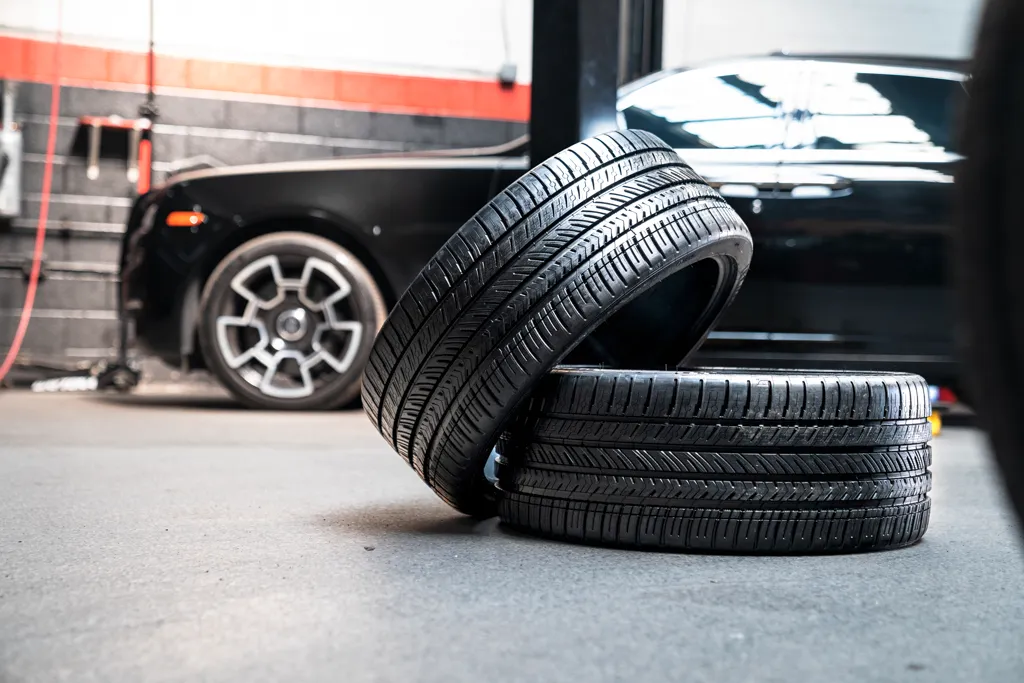Mounting a car tire might seem daunting, but it’s quite manageable. With the right steps, you can do it yourself.
Changing a tire is an essential skill for every car owner. Whether you’re dealing with a flat on the side of the road or simply changing out your seasonal tires, knowing how to mount a car tire can save you time and money.
This guide will walk you through the process, ensuring you have the confidence to tackle this task on your own. From gathering the necessary tools to following a step-by-step approach, you’ll be ready to get back on the road quickly and safely. Let’s dive into the details and make tire mounting a breeze.

Credit: gotire.com
Preparing Your Workspace
Pick a flat surface to work on. Avoid hills or slopes. Make sure the area is well-lit. Good lighting helps you see better. Check for any obstructions around. Keep pets and kids away.
Collect all needed tools first. You will need a jack and lug wrench. A tire iron is also essential. Have a new tire ready. Gloves can protect your hands. A flashlight is useful for dark spaces.
Removing The Old Tire
Use a wrench to loosen the lug nuts. Do not remove them yet. Turn each nut counterclockwise. Make sure they are loose but still on the tire.
Place the jack under the car’s frame. Raise the car until the tire is off the ground. Make sure the car is stable and won’t move.
Now, remove the lug nuts completely. Put them in a safe place. Pull the tire straight off the car. Be careful; it may be heavy.
Inspecting The Wheel And Tire
Look closely at the tire. Check for any cuts, tears, or punctures. Examine the tread. It should be deep and even. Inspect the sidewalls. They should be smooth without any bulges. Inspect the wheel for any cracks or dents. Safety comes first.
Use a soft cloth or brush. Remove any dirt or grime. Use water and mild soap. Dry the wheel completely. This makes it easier to mount the tire. A clean wheel helps ensure a good seal.
Mounting The New Tire
First, place the tire on the wheel. Make sure the valve stem is aligned. Push the tire gently onto the wheel. Check that it sits evenly.
Use lubricant on the tire bead. This helps it slide into place. Press down with your hands. You can also use a tire lever. Make sure the bead sits properly.
Inflating The Tire
Inflating the tire is a crucial step in mounting a car tire. Ensure the tire is properly seated on the rim before adding air.
Using A Tire Inflator
First, attach the tire inflator to the tire valve. Make sure it fits snugly. Turn on the inflator. Watch the gauge closely. Stop inflating when you reach the correct pressure. Read the car manual to know the right pressure. Never overinflate the tire. It can burst and cause danger.
Checking Air Pressure
Use a tire pressure gauge to check the air pressure. Remove the valve cap and press the gauge onto the valve stem. Read the pressure level. Compare it with the recommended level in your car manual. If the tire is underinflated, add more air. If it is overinflated, release some air. Always keep the tire pressure at the right level for safety.

Credit: www.reddit.com
Reattaching The Wheel
Lift the wheel up to the hub. Line up the holes in the wheel with the lug bolts. Push the wheel onto the hub until it sits flat. Make sure the wheel is snug. Keep the wheel in place with one hand. Use the other hand to start threading the lug nuts onto the bolts. Hand-tighten each lug nut. Do not use tools yet. Ensure each nut is threaded properly.
Tighten the lug nuts in a star pattern. This means tighten one nut, then skip one, and tighten the next. Repeat until all nuts are tight. Use a wrench to tighten each nut. Do not over-tighten at first. Go around the nuts a second time. This time, tighten them all the way. Ensure each lug nut is secure. Check that the wheel is firm and does not wobble.
Final Checks
Ensure the tire is seated properly on the wheel. Check the air pressure. Secure the lug nuts tightly.
Lowering The Vehicle
Slowly lower the car using the jack. Make sure the tire touches the ground. Remove the jack once the car is stable. Double-check that the car is steady.
Ensuring Proper Lug Nut Torque
Use a torque wrench to tighten the lug nuts. Follow the car manual for the correct torque value. Tighten each nut in a star pattern. This ensures even pressure. Recheck each nut for tightness. A loose nut can be dangerous. Make sure all nuts are properly tightened.

Credit: www.youtube.com
Frequently Asked Questions
Can I Mount My Own Car Tires?
Yes, you can mount your own car tires. Ensure you have the proper tools and knowledge. Follow safety guidelines strictly.
How Do You Properly Mount A Tire?
Mount a tire by cleaning the rim, lubricating the bead, placing the tire on the rim, inflating it, and balancing.
Can You Mount A Tire Without A Machine?
Yes, you can mount a tire without a machine. Use tire levers, soapy water, and elbow grease for a manual process.
Is There A Wrong Way To Mount A Tire?
Yes, you can mount a tire incorrectly. Improper alignment or direction can cause uneven wear and safety issues.
Conclusion
Mounting a car tire may seem challenging, but it’s manageable. Follow the steps carefully. Ensure the tire is positioned correctly. Tighten the lug nuts securely. Regular checks can prevent future issues. Proper tire mounting enhances safety and performance. Keep practicing for better results.
Your car will thank you for the effort. Drive safely and enjoy the journey!

